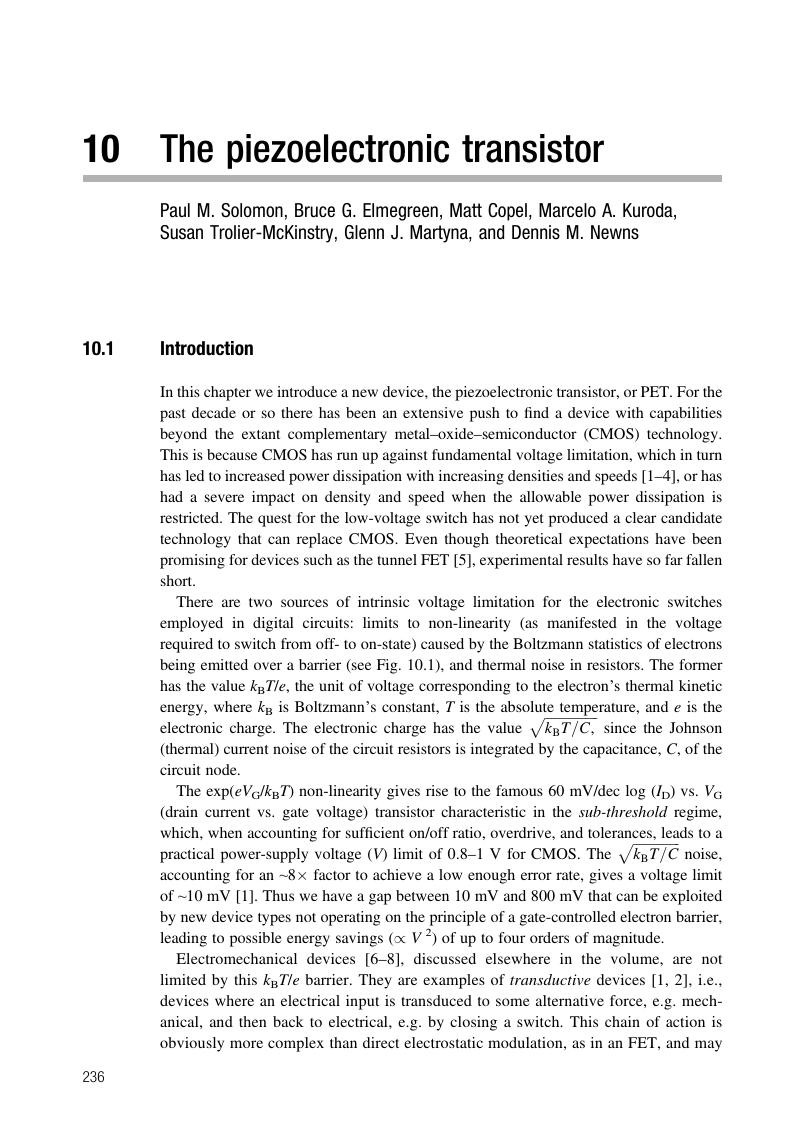Book contents
- Frontmatter
- Contents
- Contributors
- Preface
- Section I CMOS circuits and technology limits
- Section II Tunneling devices
- Section III Alternative field effect devices
- 9 Computation and learning with metal–insulator transitions and emergent phases in correlated oxides
- 10 The piezoelectronic transistor
- 11 Mechanical switches
- Section IV Spin-based devices
- Section V Interconnect considerations
- Index
- References
10 - The piezoelectronic transistor
from Section III - Alternative field effect devices
Published online by Cambridge University Press: 05 February 2015
- Frontmatter
- Contents
- Contributors
- Preface
- Section I CMOS circuits and technology limits
- Section II Tunneling devices
- Section III Alternative field effect devices
- 9 Computation and learning with metal–insulator transitions and emergent phases in correlated oxides
- 10 The piezoelectronic transistor
- 11 Mechanical switches
- Section IV Spin-based devices
- Section V Interconnect considerations
- Index
- References
Summary

- Type
- Chapter
- Information
- CMOS and BeyondLogic Switches for Terascale Integrated Circuits, pp. 236 - 262Publisher: Cambridge University PressPrint publication year: 2015



